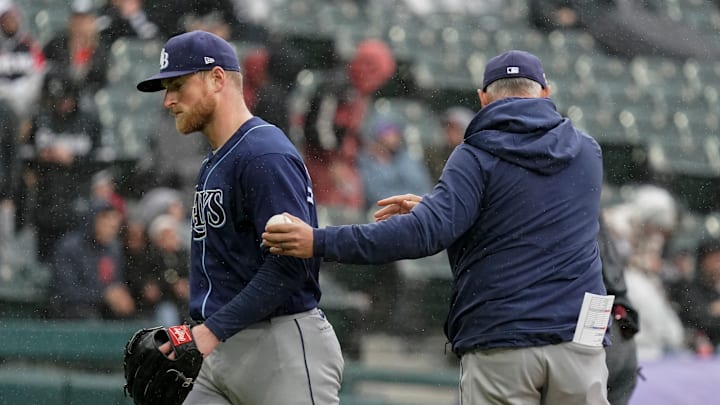There is only one thing worse than losing a star pitcher to injuries, and that is losing multiple. For Tamp Bay Rays fans, it has felt like losing elite arms is a weekly routine, and at some points, this has teetered on being true. The Jeffrey Springs and Drew Rasmussen injuries were brutal enough, but Shane McClanahan’s potentially season-ending ailment has had many questioning the organization and its philosophies. However, even with mounting reasons to question the Rays’ handling of their pitchers, it is essential to look at these injuries with a little bit of context.
Pitching injuries are quite common across the sport of baseball. The fact that there is a surgical procedure named after former All-Star Tommy John shows you all you need to know. Arm injuries have always been an unfortunate inherent risk with the sport, but they have become more common. Baseball Prospectus reported earlier in the year that pitcher injuries have increased 44%, with the inference being made that it correlated with the addition of the pitch clock.
The Rays, Astros, Dodgers and Braves are the four teams with the best records in the 2020s decade thus far. They also have four of the most consistently injury-ravaged pitching staffs. Great pitchers on these teams such as Justin Verlander, Dustin May, Lance McCullers Jr., Mike Soroka, Walker Buehler and many more have all suffered devastating long-term injuries, with fans of these franchises asking for answers from the training staff. The reality is, the nastiness of pitchers is a double-edged sword. Imparting insane spin and velocity on a ball makes it easier to miss bats consistently, but it also puts more stress on the arm, leading to injury.
Long-term success seems like a bit of a pipe dream for today’s starting pitchers. According to Fangraphs’ FIP-based model, Jacob deGrom has the highest WAR of any starter since 2018, with 27.1. This is rather peculiar, as deGrom has pitched the least innings of any player in the top ten of that timespan. Despite the major advantage in total innings that the rest of the top ten has over deGrom, they have not been able to consistently perform at a high enough level to accrue as much WAR as baseball’s most talented pitcher. Elite starting pitchers have become so volatile, that the few that stay healthy are bound to experience down years. Of last year’s Cy Young finalists, only two of them, Dylan Cease and Sandy Alcantara, have a Fangraphs WAR above 2, and even then their ERAs are above four.
To summarize, elite starting pitchers are pretty much either bound to get injured or have down seasons. However, this still does not answer why it seems that the Rays stand above the rest in terms of pitcher injuries. The truth is that the Rays' formula doesn’t necessarily make players injury-prone, the Rays' formula involves taking in pitchers who were injury-prone.
Drew Rasmussen is in many ways the Rays’ pitching staff’s poster child. He was a reliever-turned-starter who after some time settling in found himself as a potential perennial Cy Young dark horse pick. Rasmussen as we know is out for the season, but this is not the first time he has experienced an ill-timed arm injury. At age 28, he has already had two Tommy John surgeries, and is now going to have his third elbow-related operation. Shane McClanahan is another Rays star with a history of elbow injuries, as he went through Tommy John surgery in college.
Should the Rays keep acquiring injury-prone pitchers? Maybe not. But the line between “injury-prone” and “consistently elite” is seemingly becoming more and more blurred each season. Unfortunately, elbow injuries have become a part of the job description, and while this may lead to one questioning how far pitching should push the human body’s limits, it is not something that the training staff and coaches of one franchise should be blamed for.
